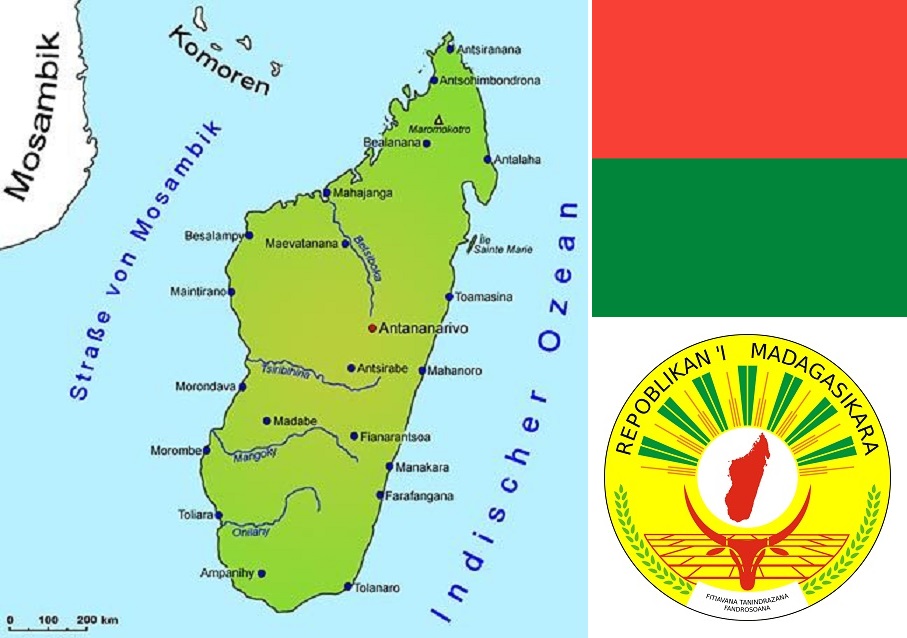The Republic of Madagascar (malagasy: Repoblikan'i Madagasikara) with its capital Antananarivo covers 587,295 km². The fourth largest island in the world lies around 420 kilometres off the east coast of Mozambique in the Indian Ocean and is therefore counted as part of East Africa. The national territory includes countless islands, most of which are very small. The two largest off the north-west coast are Nosy Be (325 km²) and Nosy Mitsio (30 km²), other smaller neighbouring islands are Nosy Iranja, Nosy Mitsio, Nosy Sakatia and Nosy Tanikely. Madagascar was a French colony from 1896 until it gained independence in 1960. The Comoros archipelago (2,236 km²) off the north coast with the capital Moroni forms an independent island state.

History
Viticulture was established here by Jesuit missionaries at the beginning of the 19th century. The botanist André Michaux (1746-1802) planted the Isabella variety in 1802. In 1886, US-Americans carried out cultivation trials in the southern highlands and other parts of the country. From the 1920s onwards, there were significant production quantities. In 1958, the Cistercians founded the Maromby monastery near Fianarantsoa, which is dedicated to viticulture.
Viticulture
Since independence, wine production has mainly been carried out by Chilean immigrants. At the beginning of the 1960s, Swiss settlers motivated members of the Betsileo tribe to use their experience with rice culture for viticulture. The climate is temperate and warm, with moderate dry and rainy seasons. The vineyards are located on the highlands of Fianarantsoa south of Antananarivo, as well as Ambaolavo at an altitude of between 750 and 1,350 metres above sea level at Zimbabwe. The grape harvest takes place at the end of the tropical rainy season at the end of February.
In 2021, the vineyards covered 2,729 hectares and the wine production volume was 78,000 hectolitres. They are mainly planted with hybrids, but also with European Vitis vinifera varieties. These are the white wine varieties Couderc Blanc (Couderc 13), Seyval Blanc and Villard Blanc, as well as the red wine varieties Chambourcin, Petit Bouschet, Varousset and Villard Noir. Since 2010, a French-Madagascan winemaker couple has been producing wines exclusively from European varieties under Clos Nomena.
Specialities include lightly pressed vin gris (similar to Pinot Blanc), as well as dessert wines flavoured with coconut, pineapple or oranges. Around 700 winegrowers cultivate areas of up to two hectares. Well-known producers include Chan Fao Tong, Clos Nomena, Domaine Lovasoa, Domaine Mendrika, Lazan'i Betsileo, Monastère de Maromby, Soa Vita and Sociéte Mac et frères.
Map: © Goruma
Flag: Public domain, Link
Coat of arms: by Ndriana - Own work, Public domain, Link
Voices of our members

wein.plus is a handy, efficient guide to a quick overview of the colourful world of wines, winegrowers and grape varieties. In Wine lexicon, the most comprehensive of its kind in the world, you will find around 26,000 keywords on the subject of grape varieties, wineries, wine-growing regions and much more.
Roman Horvath MW
Domäne Wachau (Wachau)